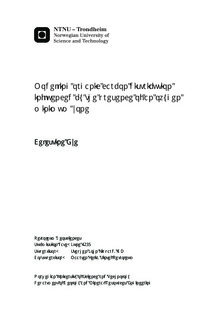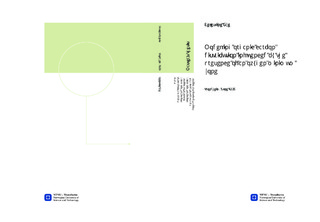| dc.contributor.advisor | Lippard, Stephen John | nb_NO |
| dc.contributor.advisor | Felix, Maarten | nb_NO |
| dc.contributor.author | Eze, Celestine | nb_NO |
| dc.date.accessioned | 2014-12-19T12:17:43Z | |
| dc.date.available | 2014-12-19T12:17:43Z | |
| dc.date.created | 2013-10-19 | nb_NO |
| dc.date.issued | 2013 | nb_NO |
| dc.identifier | 657465 | nb_NO |
| dc.identifier | ntnudaim:9495 | nb_NO |
| dc.identifier.uri | http://hdl.handle.net/11250/240211 | |
| dc.description.abstract | The processes for the preservation of organic carbon in deposited sediment over geologic time have been a source of debate over the years. Several studies have been carried out on the topic; some studies indicate anoxia as the main factor controlling the preservation of organic carbon, while others suggest productivity. In order to study the influence of an oxygen minimum zone (an anoxic setting) on the preservation and distribution of organic matter in surface sediments, OF-Mod 1D and 3D were used to model the spatial distribution of organic carbon in surficial sediments across an oxygen minimum zone on the Pakistan margin north of the Indian Ocean. Measured data acquired from the area are used as input and also to calibrate the models. The spatial modelling of organic carbon across the Pakistan Margin using OF-Mod 3D showed that organic carbon was deposited within the OMZ as well as in areas outside the OMZ. There is an organic carbon maximum on the mid slope across the Pakistan margin, and areas around the Indus canyon in the south have relatively high organic carbon content compared to the northern areas. The margin is dominated by marine derived organic carbon with δ13C values of -19 to -23 (?) and terrigenous organic carbon content is low across the margin. Organic carbon quality is generally low across the margin due to degradation resulting in high amount of residual organic carbon as confirmed by low HI values of 180 to 275 (mg HC/g C). Preservation of marine derived organic carbon was found to be influenced by the OMZ and sedimentation rate on the slope while it is mainly influenced by sedimentation rate on the shelf. Higher source rock potentials are expected where the sedimentation rate is optimum in areas either within the OMZ or on the shelf outside the OMZ. Thus, within the Pakistan Margin the OMZ does not exclusively influence the preservation and spatial distribution of marine organic carbon, but it depends on the amount of organic carbon supplied to the system and an optimum sedimentation rate. | nb_NO |
| dc.language | eng | nb_NO |
| dc.publisher | Institutt for geologi og bergteknikk | nb_NO |
| dc.title | Modelling organic carbon distribution influenced by the presence of an oxygen minimum zone | nb_NO |
| dc.type | Master thesis | nb_NO |
| dc.source.pagenumber | 99 | nb_NO |
| dc.contributor.department | Norges teknisk-naturvitenskapelige universitet, Fakultet for ingeniørvitenskap og teknologi, Institutt for petroleumsteknologi og anvendt geofysikk | nb_NO |

